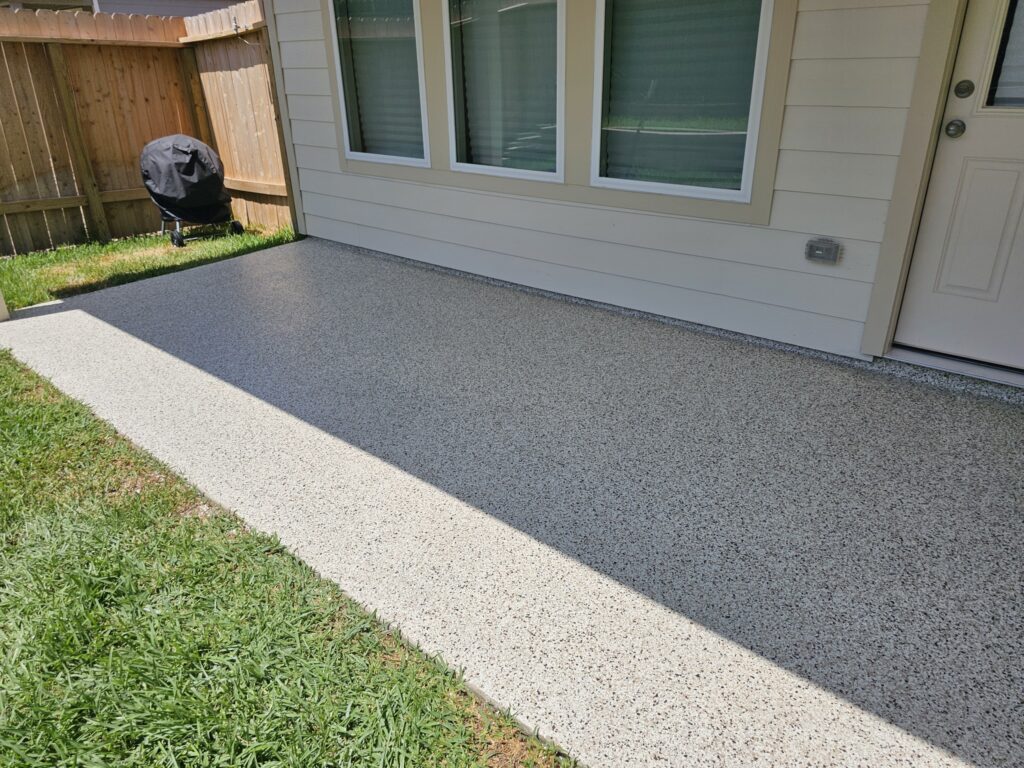Epoxy flooring is known for its durability, longevity, and aesthetic appeal. However, like any other flooring solution, it can also face occasional issues that require timely repair, preventive maintenance, and proper care to ensure its performance and appearance last for years to come. In this comprehensive guide, we will explore the process of repairing epoxy flooring in Conroe, providing valuable insights into identifying common issues, understanding the underlying causes, and determining appropriate repair methods.
From cracks and delamination to peeling and discoloration, various issues can arise in epoxy flooring systems. Addressing these problems as soon as they appear is essential in maintaining the functionality and visual appeal of your epoxy floor, as well as avoiding more significant and costly damage down the line. By understanding the root causes of different epoxy floor problems and selecting the correct repair techniques, you can preserve and prolong the beauty and performance of your floor.
In the following sections, we will provide detailed guidance on the various repair methods for specific epoxy floor issues and emphasize the value of regular maintenance and appropriate care to mitigate potential problems and extend the life of your epoxy flooring. Our goal is to educate and empower Conroe homeowners and business owners with the knowledge and resources to effectively address epoxy flooring repairs, ensuring beautiful and functional floors for years to come.
Identifying Common Epoxy Flooring Issues
Before embarking on any repair procedures, it’s crucial first to identify the specific issues your epoxy floor is facing. Some of the most common problems include:
- Cracks and Surface Damage:
Cracks can appear on epoxy floors due to heavy loads, temperature fluctuations, or improper installation. Surface damage can also occur from dropped tools or other accidents.
- Delamination or Peeling:
Delamination or peeling refers to a separation of the epoxy coating from the underlying substrate, often caused by inadequate surface preparation or moisture ingress.
- Discoloration or Yellowing:
Epoxy flooring can sometimes exhibit discoloration or yellowing due to excessive exposure to sunlight (UV radiation), chemical spills, or from using low-quality epoxy materials.
- Blisters or Bubbles:
Air or moisture trapped beneath the epoxy coating can lead to the formation of blisters or bubbles, compromising the integrity and appearance of the floor.
Understanding the Root Causes
To effectively repair epoxy flooring issues, it’s essential to understand the root causes of each problem. Gaining knowledge of the factors that contribute to these issues can help prevent them from recurring in the future.
- Improper Installation:
Issues like cracks, delamination, and blisters can arise due to improper installation practices such as inadequate surface preparation, incorrect mixing ratios, or applying the epoxy coating in unsuitable temperatures or humidity levels.
- Heavy Loads or Impact:
Cracks and surface damage can result from excessive weight or impact on the floor, such as heavy equipment, machinery, or dropped tools.
- Exposure to Chemicals or Moisture:
Epoxy flooring systems can be susceptible to damage from prolonged exposure to harsh chemicals or moisture if not adequately sealed or treated. This can lead to discoloration, peeling, or degradation of the epoxy surface.
Repair Methods for Different Issues
Once the root causes of epoxy floor problems have been identified, appropriate repair techniques can be employed to address each specific issue.
- Repairing Cracks and Surface Damage:
– Clean the affected area thoroughly to remove dirt, debris, and any loose material.
– Use an epoxy crack filler or repair compound to fill in the cracks, following the manufacturer’s instructions on preparation, application, and curing.
– Sand the repaired area to ensure a smooth and even finish, then clean the surface to remove any dust or debris.
– Apply a topcoat of epoxy coating to match the existing floor and protect the repaired area.
- Fixing Delamination or Peeling:
– Remove the loose or peeling epoxy by scraping, sanding, or using a chemical stripper.
– Clean and prepare the exposed substrate by removing any contaminants, dust, or debris.
– Apply a suitable epoxy primer or bonding agent to the bare surface, followed by a new layer of epoxy coating, ensuring proper adhesion and curing as per the manufacturer’s instructions.
- Addressing Discoloration or Yellowing:
– Clean the discolored area to remove any contaminants or surface residue.
– If the discoloration is due to exposure to UV radiation, consider using a UV-resistant epoxy or polyurethane topcoat to prevent yellowing in the future.
– Apply a new layer of epoxy coating that matches the existing floor color, ensuring proper surface preparation and curing as per the manufacturer’s instructions.
- Repairing Blisters or Bubbles:
– Remove the affected epoxy coating by cutting out the blistered or bubbled areas, taking care not to damage the underlying substrate.
– Clean and dry the exposed surface to remove any contaminants, moisture, or debris.
– Apply an appropriate epoxy primer or bonding agent, followed by a new layer of epoxy coating, ensuring proper adhesion and curing as per the manufacturer’s instructions.
The Importance of Preventive Maintenance and Care
To ensure the longevity and beauty of your epoxy flooring, it’s essential to adopt preventive maintenance and proper care practices:
- Regular Cleaning:
Keep your epoxy floor clean by sweeping or vacuuming regularly to remove dirt, debris, and abrasive particles that can cause scratches or surface damage.
- Prompt Spill Cleanup:
Quickly address any spills, particularly chemicals or liquids, that can potentially damage the epoxy surface or lead to discoloration.
- Protective Measures:
Use protective mats or pads under heavy equipment or areas of high impact to prevent surface damage from machinery or dropped tools. In addition, consider installing floor signs or safety markings to guide traffic and reduce the risk of accidents.
- Periodic Inspections:
Schedule regular inspections to identify any potential issues and address them before they escalate into more significant problems.
Conclusion:
Understanding the specific issues your epoxy floor is facing and taking prompt action to repair them is essential in maintaining its beauty, functionality, and longevity. In addition, adopting preventive maintenance and proper care practices can help you avoid more significant problems in the future. Conroe homeowners and businesses that prioritize timely repairs and care for their epoxy flooring can experience lasting durability, aesthetics, and optimal performance.
When you need expert advice or assistance in repairing and maintaining your epoxy flooring, trust Musselman Painting. With our extensive experience and commitment to quality, we can help you keep your epoxy floor looking stunning and performing at its best. Contact us at (phone number) or fill out our online form to schedule a consultation and let us help you take care of







